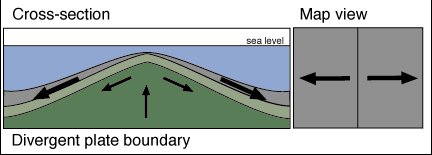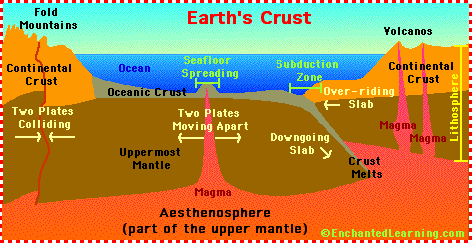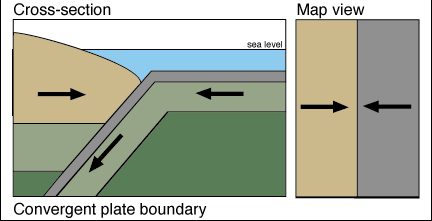 |
|
---> HOME |
 |
|
---> HOME |
The tectonic plates are large chunks
of the earth's crust, that move about on the surface of the
planet, floating on the mantle. They are a bit like very big
pieces of a giant jigsaw puzzle. They move very very slowly, about as
fast as your fingernails grow. They may move a few
centimetres over a whole year. But over long periods of
time, that very slow movement can make quite a big
difference. Sometimes the plates move apart from
each other. This is called divergence.

 |
Divergence of the plates often happens under the sea. The plates slowly drift apart, and new material from the mantle comes up and gets hard as it cools down nearer the surface. In this way, as the big continental plates move away from each other, oceans like the Pacific or the Atlantic are formed. |
But tectonic plates can also move
towards each other, and scientists call this convergence.
Here, one plate usually slides underneath another plate,
forcing the other one up higher. Plates can also slide PAST each
other, and sometimes they do this smoothly, and sometimes
they do it in bumps and lurches. An example of this is the
San Andreas Fault in America, where they often have
earthquakes.
